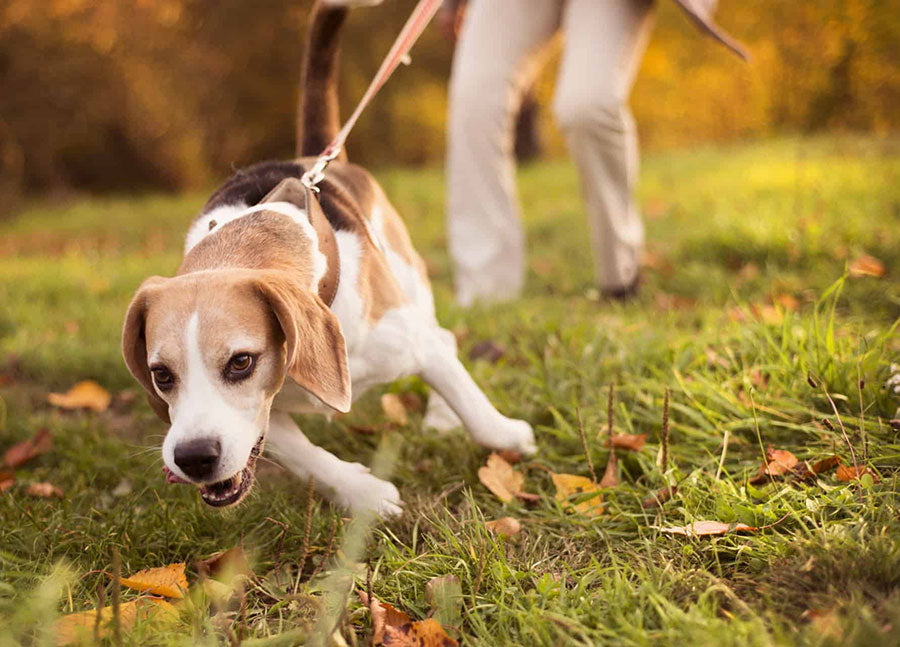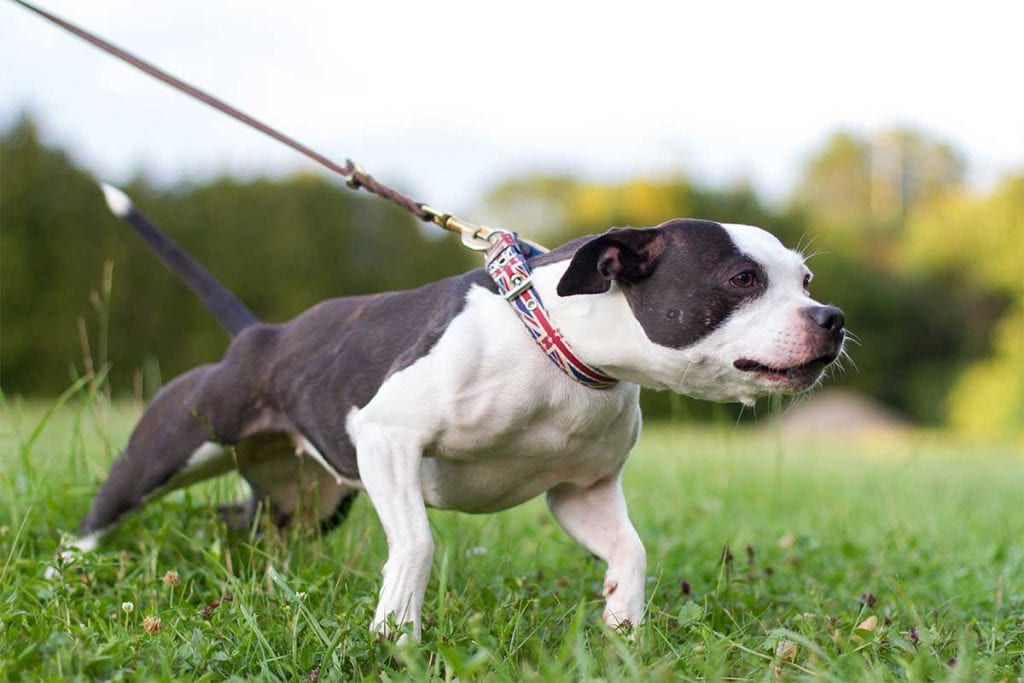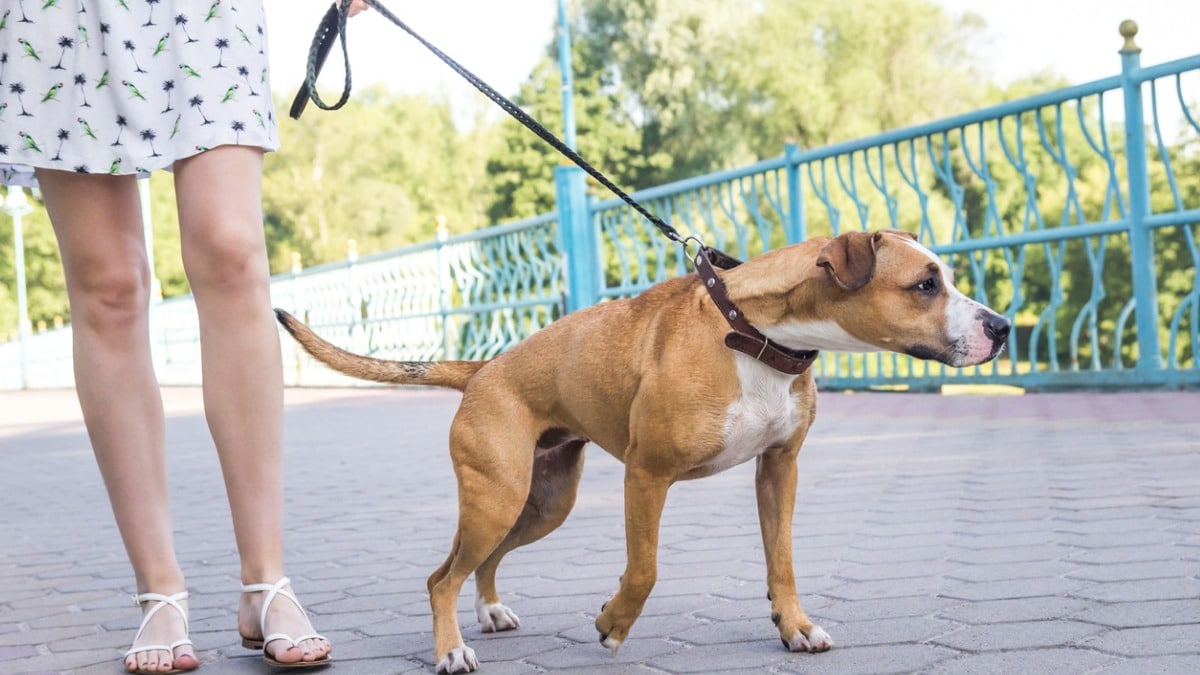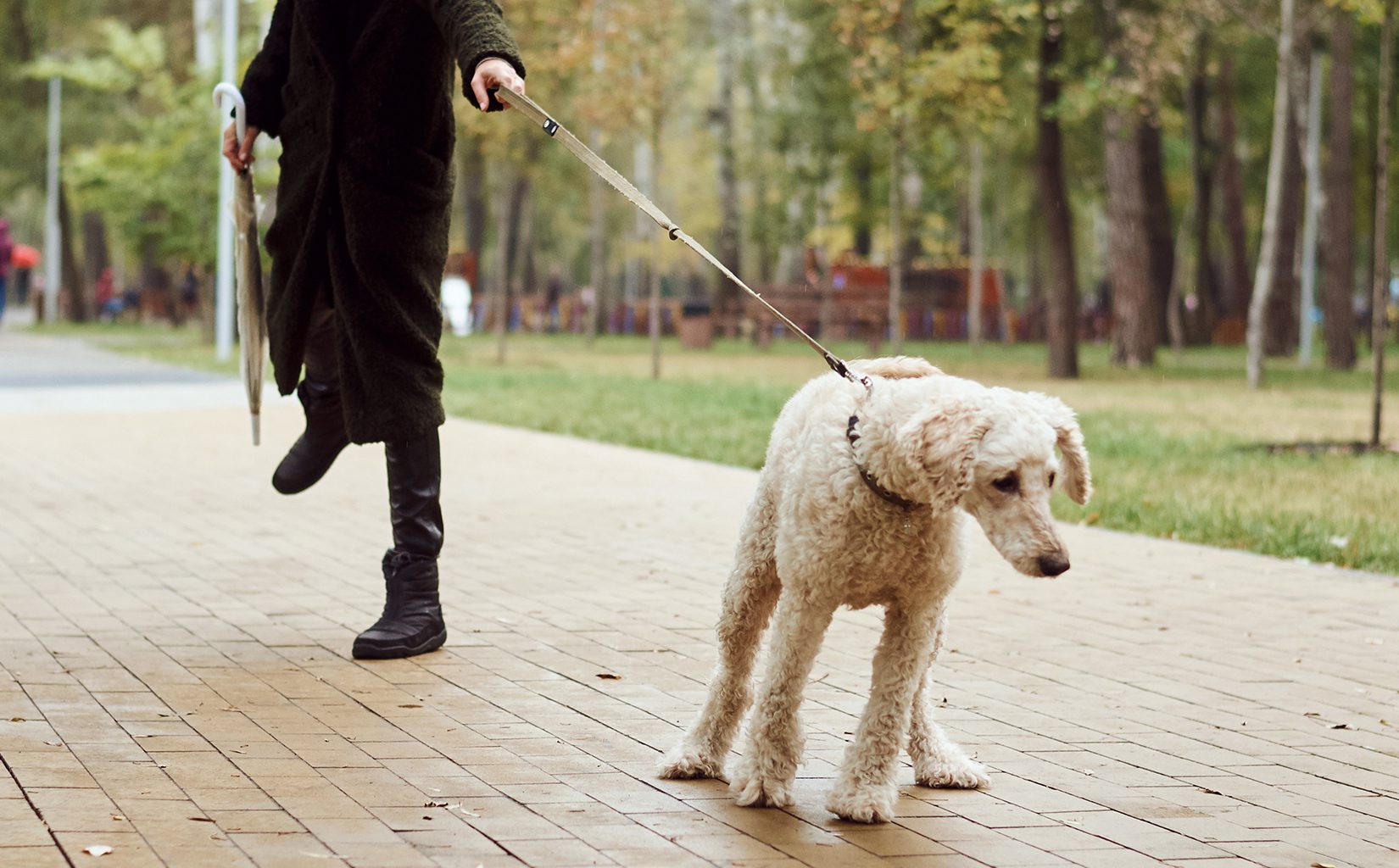Introduction
Walking your dog can be a delightful experience, but it can quickly turn into a frustrating ordeal if your furry companion constantly pulls on the leash. Pulling on the leash not only makes walks less enjoyable but can also be dangerous for both you and your dog. Fortunately, with the right techniques and consistent training, you can teach your dog to walk politely by your side. In this comprehensive guide, we’ll explore effective strategies to put an end to pulling and transform your walks into enjoyable bonding experiences with your canine friend.

Understanding Why Dogs Pull
Before delving into the techniques to stop your dog from pulling on the leash, it’s essential to understand why dogs exhibit this behavior. Dogs pull on the leash for various reasons, including excitement, curiosity, and the desire to explore their surroundings. Additionally, some dogs pull because they haven’t been properly trained to walk on a leash or because they have learned that pulling gets them where they want to go faster.
Establishing a Foundation: Basic Training Principles
Before addressing leash pulling specifically, it’s crucial to establish a solid foundation of obedience and communication with your dog. Basic obedience commands such as “sit,” “stay,” and “heel” lay the groundwork for leash training. Consistency, positive reinforcement, and patience are key principles in any training regimen.

Choosing the Right Equipment
Selecting the appropriate equipment can significantly impact your efforts to stop your dog from pulling on the leash. A well-fitted collar or harness, along with a sturdy leash, can provide better control and comfort for both you and your dog. Harnesses designed to discourage pulling, such as front-clip or no-pull harnesses, may be particularly effective for dogs prone to pulling.
Leash Walking Techniques
Teaching Loose Leash Walking
One of the most effective techniques for stopping leash pulling is teaching your dog to walk on a loose leash. Start by rewarding your dog for walking calmly beside you with treats or verbal praise. Use a consistent cue, such as “heel” or “let’s walk,” to indicate to your dog that it’s time to focus on walking politely.
Implementing the Stop-and-Go Method
The stop-and-go method involves stopping in your tracks whenever your dog begins to pull on the leash. Stand still and wait for your dog to release tension on the leash before resuming your walk. This teaches your dog that pulling will not get them closer to their desired destination and encourages them to pay attention to your movements.

Changing Direction
Another effective technique is to change direction whenever your dog starts to pull. By abruptly changing course, you disrupt your dog’s forward momentum and regain their attention. This technique not only discourages pulling but also encourages your dog to stay attentive and responsive to your movements.
Consistency and Reinforcement
Consistency is paramount when training your dog to stop pulling on the leash. Set aside dedicated time for leash training sessions and practice regularly in various environments to generalize the behavior. Consistently reinforce desired behaviors with rewards such as treats, praise, or playtime, while redirecting or ignoring unwanted behaviors.
Managing Expectations and Progress
It’s important to manage your expectations and recognize that leash training takes time and patience. Progress may be gradual, and setbacks are normal. Celebrate small victories along the way and remain patient and persistent in your training efforts. Remember that every dog learns at their own pace, and with consistent training, you’ll see improvements over time.
Addressing Specific Challenges
Dealing with Distractions
Distractions are inevitable during walks, but they can exacerbate leash pulling behavior. To address this challenge, gradually expose your dog to distractions in controlled environments and reward them for maintaining focus and loose leash walking. Use high-value treats or toys to capture your dog’s attention and reinforce desired behaviors in the presence of distractions.

Handling Reactive Behavior
Some dogs may exhibit reactive behavior, such as barking or lunging, while on walks, particularly when encountering other dogs or stimuli. Reactive behavior often stems from fear, anxiety, or frustration and can contribute to leash pulling. Implement desensitization and counterconditioning techniques to help your dog develop positive associations with triggers and reduce reactivity. Additionally, maintaining a safe distance from triggers and redirecting your dog’s attention can prevent escalations in reactive behavior.
Addressing Physical Discomfort
Physical discomfort, such as discomfort from wearing a collar or harness, can contribute to leash pulling behavior. Ensure that your dog’s equipment fits properly and is comfortable for extended periods. Gradually acclimate your dog to wearing a collar or harness through positive reinforcement and desensitization exercises. If your dog exhibits signs of discomfort, such as rubbing or chafing, consider adjusting their equipment or exploring alternative options.
Seeking Professional Guidance
In some cases, addressing leash pulling may require the expertise of a professional dog trainer or behaviorist. A qualified trainer can assess your dog’s specific needs, tailor training techniques to suit their temperament, and provide personalized guidance and support throughout the training process. Additionally, attending group obedience classes or workshops can provide valuable socialization opportunities and further enhance your dog’s training skills.
Maintaining Positive Interactions
Beyond training sessions, it’s crucial to maintain positive interactions with your dog throughout your daily activities. Use walks as opportunities for bonding and enrichment by incorporating games, sniffing breaks, and exploration into your routine. Engage in interactive play and reward your dog with praise and affection for desired behaviors both on and off the leash. By nurturing a strong bond based on trust and mutual respect, you’ll strengthen your connection with your dog and reinforce their willingness to follow your guidance during walks.

Conclusion
Putting an end to pulling and teaching your dog to walk politely on a leash is a rewarding endeavor that strengthens the bond between you and your canine companion. By understanding the underlying reasons for pulling, implementing effective training techniques, and maintaining consistency and patience, you can transform your walks into enjoyable experiences for both you and your dog. With dedication and perseverance, you’ll soon be enjoying peaceful strolls with your well-behaved pup by your side.










